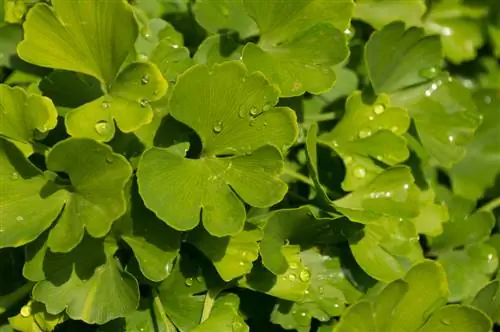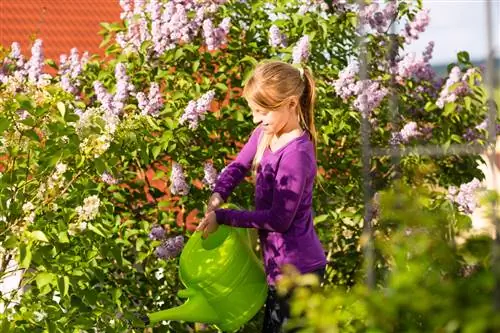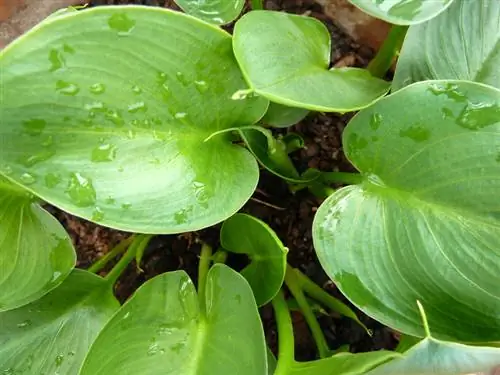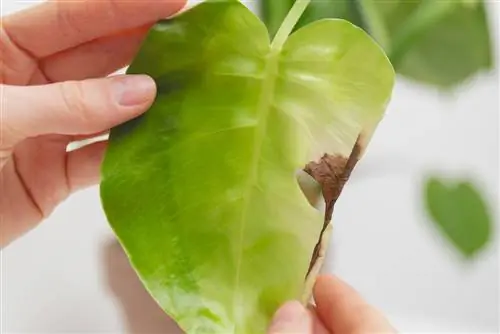- Author admin [email protected].
- Public 2023-12-16 16:46.
- Last modified 2025-01-23 11:22.
The Ginkgo (Ginkgo biloba) is truly unique and, due to its robustness, is ideal for planting as a house tree in the garden. But despite all its durability: sometimes the ginkgo shows its discomfort by rolling up its leaves.
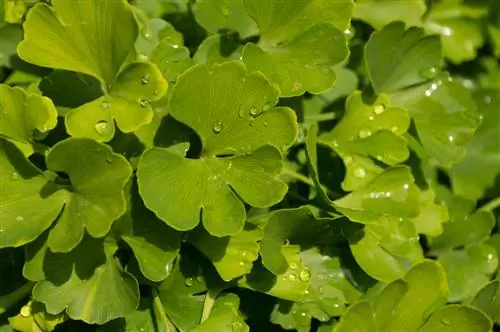
Why do ginkgo leaves curl up and what can you do about it?
When ginkgo leaves curl, there is often a lack of water, heat or exposure to pesticides. This can be remedied by increasing the water supply, avoiding pesticides or moving to a partially shaded location.
Why do ginkgo leaves curl up?
Your otherwise he althy and beautiful ginkgo suddenly curls up its leaves? Then you first have to start looking for clues, because various care errors could be the cause.
- Lack of water: Plants often curl up their leaves if they are too dry - including the ginkgo. Is it hot where you are right now and hasn't it rained in a while? Then there could be a lack of water behind it.
- Poisoning: Is there perhaps a lawn or flower bed under the ginkgo tree that you recently treated with a pesticide? Then the ginkgo has probably absorbed some of the toxins.
As a rule, however, you do not need to fear pest infestation or (fungal) diseases.
What to do if the ginkgo leaves curl up?
If the ginkgo leaves curl up, only the water hose can help - at least if the symptom is caused by a lack of water. Water Water the ginkgo when it is hot and it has not rained for a long time. Make sure that no waterlogging occurs, as this in turn leads to root rot.
If you are poisoned, the only thing that helps isWait and see. In general, the ginkgo recovers quickly and the damage disappears on its own - it is not without reason that the species has survived for millions of years and is considered extremely robust.
Can ginkgo leaves be rolled up again?
Rolled up ginkgo leaves unrollall by themselves once the cause has been eliminated. By the way, a location that is too sunny can also cause the leaves to curl. In such a place the tree quickly becomes too warm, especially on hot summer days, and the soil dries out more quickly in sunny places.
This is particularly true for ginkgos cultivated in pots, which are at risk of a lack of water more quickly than planted specimens. Make sure to water and fertilize potted specimens regularly. The right location - semi-shaded rather than sunny - also contributes to he althy growth of the ginkgo.
Tip
Beware of voles
Although the ginkgo is rarely affected by fungal diseases or harmful insects such as aphids, other pests still target it. Voles, for example, like to eat ginkgo roots, which is why you should install appropriate protection when planting.

